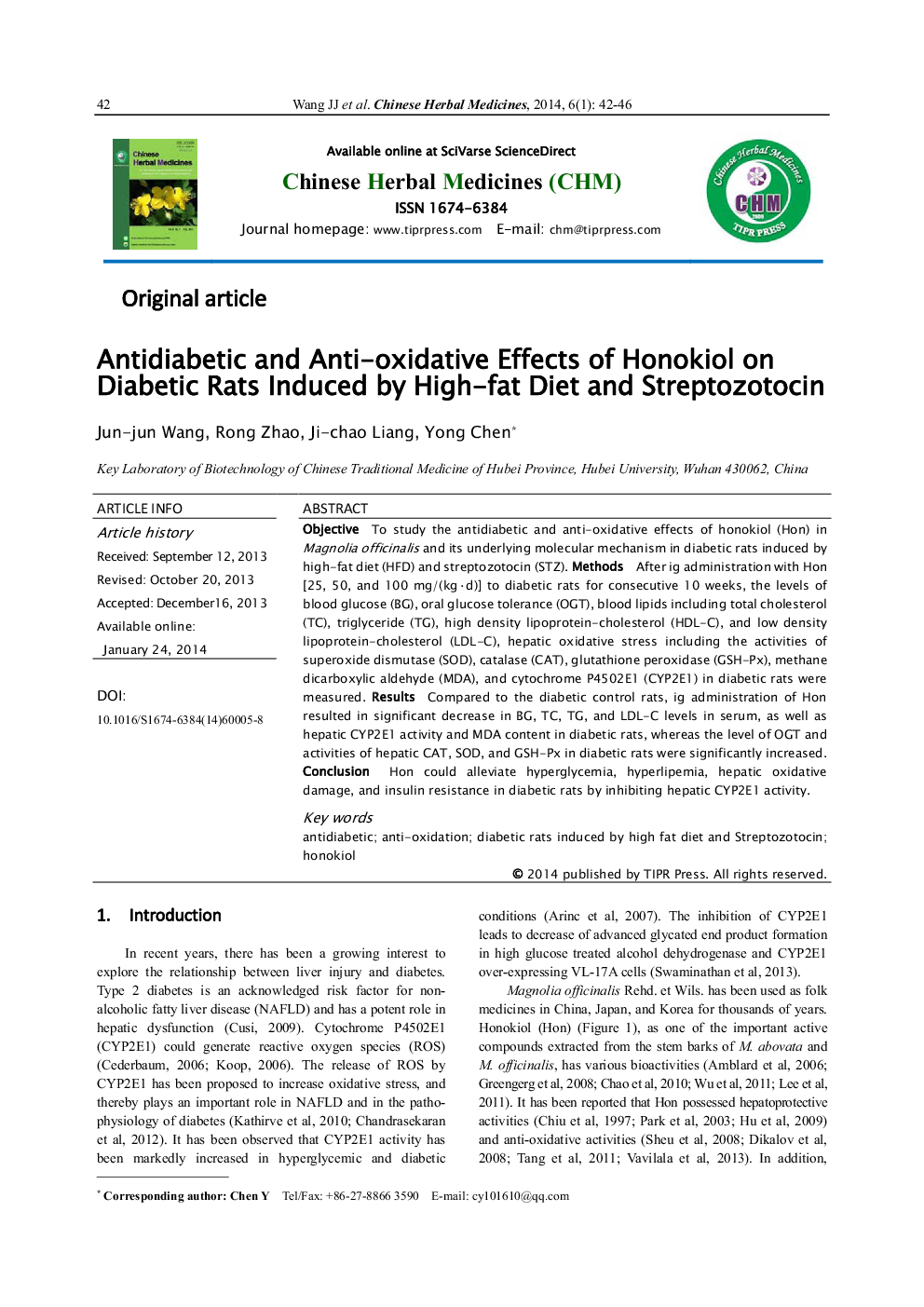| Article ID | Journal | Published Year | Pages | File Type |
|---|---|---|---|---|
| 3098134 | Chinese Herbal Medicines | 2014 | 5 Pages |
ObjectiveTo study the antidiabetic and anti-oxidative effects of honokiol (Hon) in Magnolia officinalis and its underlying molecular mechanism in diabetic rats induced by high-fat diet (HFD) and streptozotocin (STZ).MethodsAfter ig administration with Hon [25, 50, and 100 mg/(kg·d)] to diabetic rats for consecutive 10 weeks, the levels of blood glucose (BG), oral glucose tolerance (OGT), blood lipids including total cholesterol (TC), triglyceride (TG), high density lipoprotein-cholesterol (HDL-C), and low density lipoprotein-cholesterol (LDL-C), hepatic oxidative stress including the activities of superoxide dismutase (SOD), catalase (CAT), glutathione peroxidase (GSH-Px), methane dicarboxylic aldehyde (MDA), and cytochrome P4502E1 (CYP2E1) in diabetic rats were measured.ResultsCompared to the diabetic control rats, ig administration of Hon resulted in significant decrease in BG, TC, TG, and LDL-C levels in serum, as well as hepatic CYP2E1 activity and MDA content in diabetic rats, whereas the level of OGT and activities of hepatic CAT, SOD, and GSH-Px in diabetic rats were significantly increased.ConclusionHon could alleviate hyperglycemia, hyperlipemia, hepatic oxidative damage, and insulin resistance in diabetic rats by inhibiting hepatic CYP2E1 activity.
